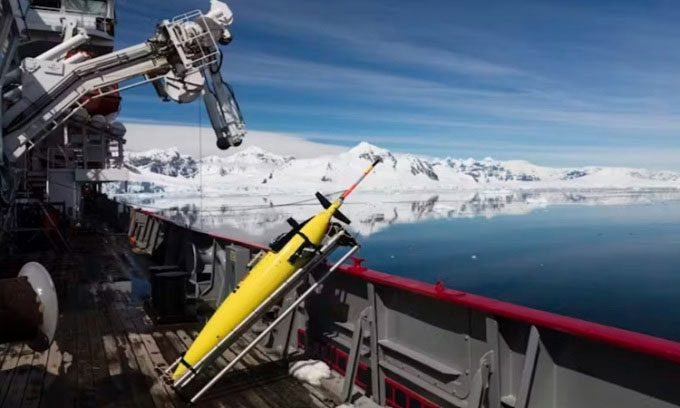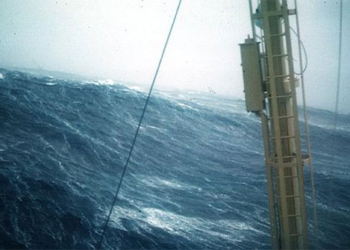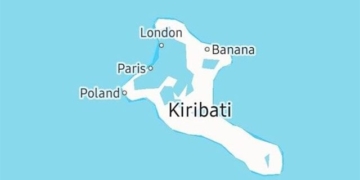The movement of wind, ice, seawater, and ocean currents in the Southern Ocean has a significant impact on global climate. However, understanding these changes is challenging due to the difficulty of measuring data and the high costs involved.
The Southern Ocean is extremely wild and fierce. This sea experiences the strongest winds and the largest waves on Earth. It is also home to icebergs the size of entire cities and the largest ocean currents globally, alongside small-scale eddies. The Southern Ocean is crucial for the Earth’s natural systems. It forms the water that fills the world’s deep oceans, storing heat and carbon from human-induced global warming and controlling the heat flow to the massive ice sheets in Antarctica, which pose the greatest threat to rising sea levels.

Scientists frequently explore the Southern Ocean. (Photo: Louise Biddle).
The scale and complexity of the Southern Ocean are difficult to fully comprehend. Scientists and various organizations regularly venture into the most remote corners of the Southern Ocean, yet this region still requires more research to enhance scientific understanding and protect valuable natural resources.
The Antarctic ice sheet is the largest body of ice on Earth, equivalent to 58 meters of global sea level. This ice sheet covers the surface of the Southern Ocean in the form of massive ice shelves. Many of these ice shelves are gradually thinning from below due to warming seawater or breaking apart and becoming icebergs at a faster rate than before. In addition to the ice shelves, millions of square kilometers of the Southern Ocean’s surface freeze into a layer of sea ice. Sea ice acts as a massive reflector of sunlight, shielding the ice shelves from intense waves.
Most sea ice is formed in small offshore areas known as “polynyas” (areas of open water in the ice cover), which are created by strong, cold winds blowing across Antarctica. The winds lower the surface ocean temperature below the freezing point, causing ice to form. As ice appears, it releases salt into the ocean surface, making the seawater at the surface denser or “heavier.” This dense water sinks into turbulent columns and flows down into deep-sea canyons, mixing with the upper layers of water.
As a result, the dense water, which is produced only in a few relatively small areas of Antarctica, accounts for about 40% of the global ocean volume. Eventually, the dense water is pushed back to the ocean surface by eddies. In the deep ocean, this mixing is primarily driven by tides flowing over rugged seabeds, creating waves.
Ocean water takes hundreds of years to circulate from the surface of the Southern Ocean to the deep waters and back. The water returning to the surface today resembles a time capsule, reflecting a cooler climate from pre-industrial times when it first sank into the deep ocean layers. The water that sinks today absorbs more carbon to store in the deep layers, contributing to limiting global warming. However, models and observations indicate that the declining sea ice and ice shelves are weakening this critical weather system, causing seawater to be warmer, less salty, and more buoyant. The difficulty of dense water sinking means a reduced capacity for carbon storage and a warmer atmosphere in the coming years.
Measuring data in the Southern Ocean is extremely challenging due to its remote location and harsh conditions. In many instances, data is scarce, making it difficult for scientists to determine how quickly changes are occurring. They believe more data is needed to monitor changes and provide early warnings for significant climate events, such as ice sheet collapse. However, ocean observation expeditions are often very expensive. For example, Australia’s advanced research vessel, RV Investigator, costs over $65,000 per day of operation.





















































